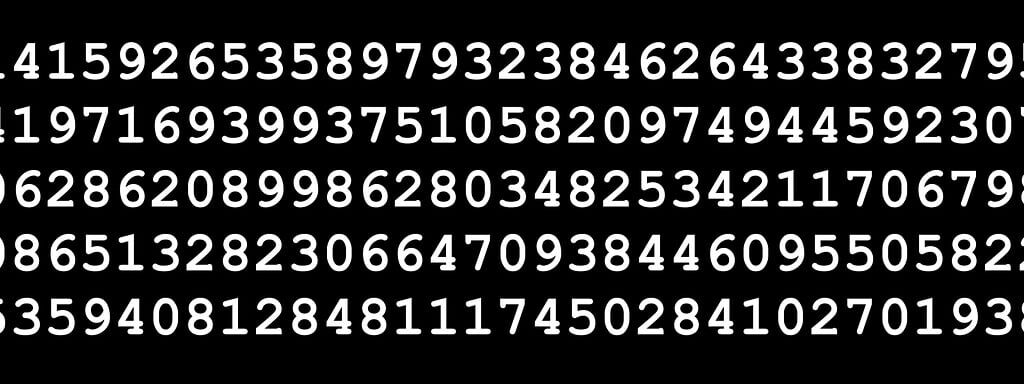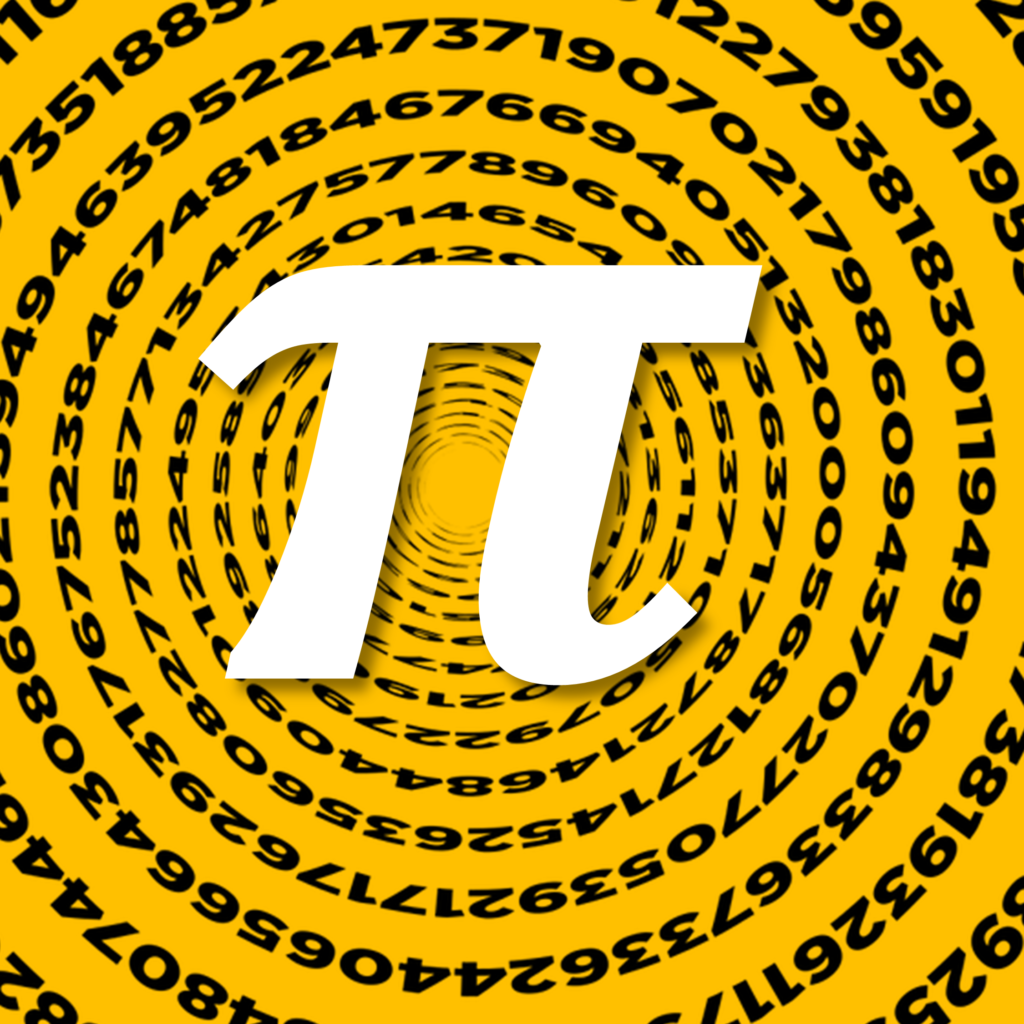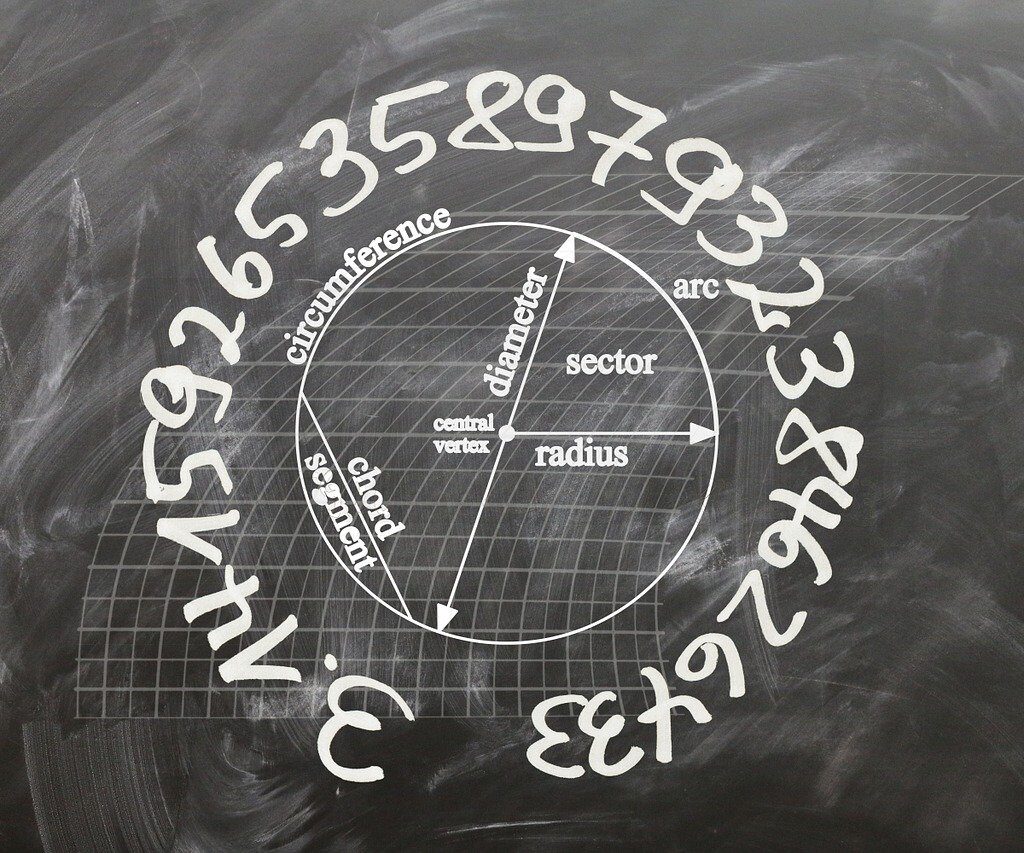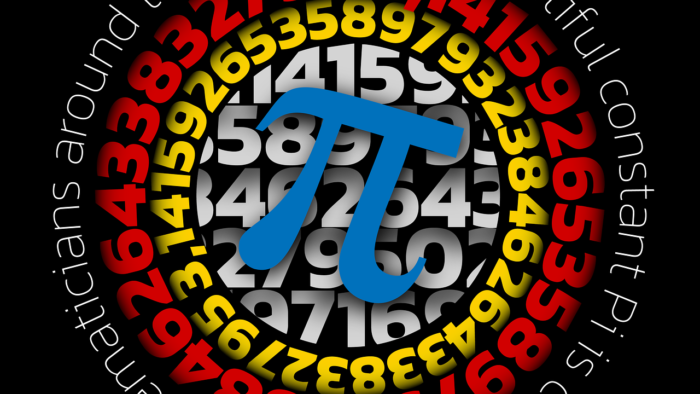Introduction
Pi (π) is a mathematical constant with enormous importance and ubiquity in many fields of study. It is defined as the circumference to diameter ratio of a circle, making it a fundamental concept in geometry. Here are some key points highlighting pi’s significance and pervasiveness:
- Geometry and Trigonometry: Pi’s properties are inextricably linked to those of circles, spheres, and other curved shapes. It is used to calculate the circumference, area, volume, and surface area of circles and spheres. Pi is essential in trigonometry for understanding angles, radians, and trigonometric functions such as sine and cosine.
- Science and Engineering: Pi is used in a wide range of scientific and engineering disciplines. In physics, it is essential for calculating wave frequencies, resonances, and orbits. Fluid dynamics, electromagnetism, and mechanics all make use of Pi. Pi is essential in engineering for designing and building circular structures such as bridges and pipelines.
- Calculations and Mathematics: Pi can be found in a variety of mathematical formulas and equations, including those relating to calculus, series, and sequences. It is an important part of Fourier analysis, which is used in signal processing and data analysis. Pi’s participation in infinite series, such as the Leibniz formula and the Wallis product, demonstrates its significance in mathematical calculations.
- Statistics and Probability: Pi is important in statistics and probability theory. It has an impact on the normal distribution, which is a popular probability distribution in statistics. Pi can also be found in formulas for random walks, random numbers, and Monte Carlo simulations.
- Natural Phenomena: Pi appears in a variety of natural phenomena and patterns. It affects the behaviour of waves like sound waves and electromagnetic waves. Pi can also be found in natural spirals, such as the spiral arrangement of sunflower seeds or the shape of galaxies.

Pi’s allure and mystique stem from its fascinating and unique properties, which have captured the imaginations of mathematicians, scholars, and enthusiasts alike. Here is an explanation of the allure and mystique of pi:
- Infinite and Non-Repeating Decimal Expansion: Pi’s decimal representation is an infinite and non-repeating sequence of digits known as 3.14159… Mathematicians are fascinated by this never-ending decimal expansion because it implies that the digits of pi can continue indefinitely without forming a predictable pattern. The fact that this simple ratio of circumference to diameter of a circle has such complexity and infinite nature adds to its allure.
- Transcendence and Irrationality: Pi is an irrational number, which means it cannot be expressed as a finite decimal or a simple fraction. The demonstration of pi’s irrationality was a significant mathematical accomplishment. The fact that pi cannot be represented exactly by any rational number adds to its mystique and distinguishes it from most numbers encountered in everyday life.
- Historical Significance: The historical significance of Pi adds to its allure. For centuries, mathematicians have been obsessed with accurately approximating pi. Pi was approximated by ancient civilizations such as the Egyptians and Babylonians, and notable mathematicians throughout history such as Archimedes and Liu Hui made significant contributions to understanding and calculating pi. This rich historical context adds to the enigma of pi.
- Connections to Geometry and Nature: Pi’s appearance in geometry, particularly its relationship with circles, adds to its allure. Since ancient times, circles have been associated with perfection and harmony, and pi is the key constant that connects their properties. Furthermore, the appearance of pi in natural phenomena such as spiral patterns found in seashells and hurricanes reinforces its relevance and fascination in the natural world.
- Cultural and Popularity Significance: Pi has gained popularity outside of mathematics. It is observed on Pi Day (March 14th), an annual event that highlights the importance of pi and encourages educational activities related to mathematics. Memorising and reciting the digits of pi has become a challenge and source of competition, adding to the mystique of the number in popular culture.

The concept of irrational numbers and the unique properties of pi are foundational to understanding the fascinating world of mathematics. Here’s an introduction to these concepts:
- Irrational Numbers: Irrational numbers are real numbers that cannot be expressed as a simple fraction or a finite decimal in mathematics. Irrational numbers, unlike rational numbers, which can be written as the ratio of two integers, have decimal representations that go on forever without repeating. This means their decimal expansions are non-terminating and non-repeating. Examples of irrational numbers include √2 (the square root of 2), π (pi), and e (Euler’s number).
- Pi’s Unique Properties: Pi is one of the most well-known and widely studied irrational numbers, and it has several distinguishing characteristics:
- Infinite Decimal Expansion: Pi has an infinite and non-repeating decimal representation. It begins with 3.14159… and goes on indefinitely with no discernible pattern. Pi’s decimal expansion is infinite, unlike rational numbers, which have finite decimal representations.
- Pi, the Fundamental Constant of Circles: Pi is inextricably linked to the geometry of circles. It denotes the circumference to diameter ratio of a circle. This ratio remains constant and equal to pi regardless of the size of the circle. Pi is a fundamental constant in the study of circles and curved shapes because of this property.
- Transcendence: Pi is a transcendental number in addition to being irrational. Transcendental numbers are those that are not roots of any non-zero polynomial equation with integer coefficients. This distinguishes pi from algebraic numbers, which can be expressed as polynomial equation solutions with integer coefficients.
- Mysteries and Unanswered Questions: Despite extensive research, some aspects of pi continue to be a mystery. For example, it is unknown whether pi is a normal number, which would imply that its digits appear with equal frequency in all bases. The normality of pi is an open question in number theory, representing an unsolved problem.

Understanding irrational numbers, such as pi, provides insights into mathematics’ infinite and unbounded nature. Pi’s distinctive properties make it a captivating and fundamental constant with numerous applications in mathematics, physics, engineering, and beyond. Exploring the mysteries and significance of pi adds to our appreciation of the mathematical realm’s depth and beauty.
The Historical Journey of Pi
- Mesopotamia and Ancient Egypt: Pi approximations can be traced back to ancient civilizations such as Egypt and Mesopotamia. Around 1650 BCE, the ancient Egyptians had a rough understanding of pi and used an approximation of 3.1605. Similarly, around 1900 BCE, ancient Mesopotamians estimated pi to be around 3.125.
- Ancient Greece: The concept of pi drew a lot of attention in ancient Greece. Archimedes (287-212 BCE), a Greek mathematician and astronomer, made significant contributions to the understanding of pi. Archimedes calculated the lower and upper bounds of pi using a geometric method known as the method of exhaustion. He discovered that pi lies between the fractions 223/71 and 22/7, with 22/7 being a popular approximation.
- India: Mathematicians in ancient India also investigated the value of pi. In his work, the Indian mathematician Aryabhata (476-550 CE) approximated pi to four decimal places (3.1416). Indian mathematicians continued to improve their approximations, with the mathematician and astronomer Bhaskara II (12th century CE) providing a five-decimal-place (3.14159) approximation of pi.
- China: Ancient Chinese mathematicians made significant advances in approximating pi as well. Zu Chongzhi (429-500 CE), a Chinese mathematician and astronomer, computed pi to seven decimal places (3.1415926) using Liu Hui’s method, a polygonal algorithm.
- Middle Ages and Renaissance: The quest for more accurate approximations of pi continued during the Middle Ages and Renaissance periods. European mathematicians such as François Viète (1540-1603), Ludolph van Ceulen (1540-1610), and others made significant contributions to calculating pi to greater decimal places, with van Ceulen calculating pi to 35 decimal places.
- Adding More Digits: With the advancement of advanced computing technology, the calculation of pi’s decimal places has improved significantly. The record for the most decimal places of pi calculated in modern times is in the trillions.

Tracing the historical development of pi through ancient civilizations demonstrates the continuing fascination with the value of this mathematical constant. Ancient mathematicians made significant contributions to approximating pi using various geometric and numerical methods. These early approximations laid the groundwork for later advances in pi’s calculation and our understanding of its properties. The historical journey of pi exemplifies the human quest for mathematical knowledge and precision.
Mathematicians such as Archimedes and Liu Hui made significant contributions to the understanding and calculation of pi, leaving an indelible mark on the field. Archimedes, an ancient Greek mathematician and scientist, made significant contributions to the study of pi. He used a geometric method known as the method of exhaustion to calculate pi. Archimedes was able to approximate the value of pi with increasing accuracy by inscribing and circumscribing polygons inside and outside a circle.
Archimedes made an important contribution by determining the lower and upper bounds of pi. He demonstrated that pi is greater than 223/71 (about 3.1408) and less than 22/7 (about 3.1429). This approximation method, known as Archimedes’ method of exhaustion, laid the groundwork for subsequent advances in pi’s calculation.
Liu Hui, a 3rd century CE Chinese mathematician, made significant advances in approximating pi. He built on the work of earlier Chinese mathematicians like Zu Chongzhi and created a polygonal algorithm to calculate pi with greater precision. In Liu Hui’s method, regular polygons with increasing numbers of sides were inscribed and circumscribed around a circle. Liu Hui was able to get closer to the value of pi by increasing the number of sides over time. Using this method, Liu Hui calculated pi to a five-decimal place approximation of 3.14159. Liu Hui made a significant contribution to pi’s approximation, especially given the time period in which he lived. His method served as a foundation for subsequent mathematicians attempting to calculate pi to even greater decimal places.
Mathematicians such as Archimedes and Liu Hui made significant contributions to the calculation and approximation of pi, which shaped our understanding of this mathematical constant. Their innovative methods and dedication to precise calculations paved the way for future advances and fueled the ongoing quest to find more digits of pi. Their contributions are still recognised and celebrated, demonstrating their long-term impact on the field of mathematics.

Throughout history, mathematicians and civilizations have made numerous attempts to approximate the value of pi. Here is an exploration of various approximations of pi across different time periods:
- Ancient Egypt and Babylon (3000 BCE – 500 BCE):
- The ancient Egyptians approximated pi using a value of 3. They used a simplified ratio of the circumference of a circle to its diameter.
- Similarly, ancient Babylonians employed a value of pi around 3.125, which was derived from dividing the perimeter of a hexagon by its diameter.
- Ancient Greece (600 BCE – 300 BCE):
- Greek mathematicians, including Archimedes, made significant progress in approximating pi. Archimedes used the method of exhaustion to determine upper and lower bounds of pi, concluding that it lies between 3.1408 and 3.1429 (approximately).
- India (400 BCE – 600 CE):
- Indian mathematicians like Aryabhata and Bhaskara I approximated pi in their works. Aryabhata provided an approximation of pi as 3.1416, accurate to four decimal places. Bhaskara I improved upon this approximation with 3.1415926535898, accurate to twelve decimal places.
- China (200 BCE – 1000 CE):
- Chinese mathematicians, notably Liu Hui and Zu Chongzhi, made significant contributions to approximating pi. Liu Hui used a polygonal algorithm, inscribing and circumscribing regular polygons, to approximate pi as 3.14159, accurate to five decimal places. Zu Chongzhi calculated pi to seven decimal places using a similar method.
- Middle Ages and Renaissance (500 CE – 1600 CE):
- During this period, mathematicians like Al-Khwarizmi, Fibonacci, and Viète contributed to pi’s approximation. Al-Khwarizmi improved the approximation to 3.1416, while Fibonacci introduced the “Fibonacci sequence” as a tool for approximating pi. François Viète calculated pi to 9 decimal places using polygonal approximations.
- Modern Era (1600 CE – Present):
- The development of calculus and more advanced mathematical techniques led to significant progress in approximating pi. Mathematicians such as John Wallis, Abraham Sharp, and Srinivasa Ramanujan contributed to pi’s calculation, achieving approximations accurate to hundreds or thousands of decimal places.
- With the advent of computers, pi has been calculated to billions and trillions of decimal places, with ongoing efforts to push the boundaries even further.
The study of pi approximations throughout history demonstrates the human quest for precision and comprehension. From ancient civilizations to modern mathematicians, each approximation has added to our evolving understanding of this enthralling mathematical constant.


I love it whenever people come together and share opinions.
Great website, keep it up! https://glassi-info.blogspot.com/2025/08/deposits-and-withdrawals-methods-in.html
Loveloren is a versatile brand offering a range of products including lingerie, swimwear, activewear, accessories, and clothing. Known for its attention to detail, quality materials, and stylish designs, Loveloren caters to individuals seeking fashion-forward and comfortable options for various occasions. Whether it’s intimates for everyday wear, chic swimwear for lounging by the pool, trendy activewear for workouts, or stylish accessories to complete any outfit, Loveloren aims to provide customers with a diverse selection to suit their personal style preferences. http://www.loveloren.com
Thanks for sharing. I read many of your blog posts, cool, your blog is very good. https://www.binance.com/de-CH/register?ref=W0BCQMF1